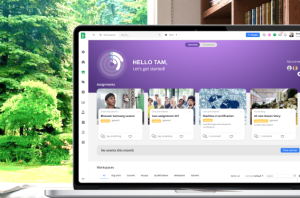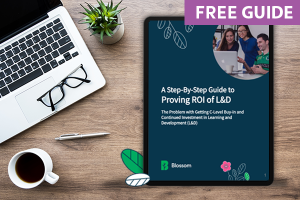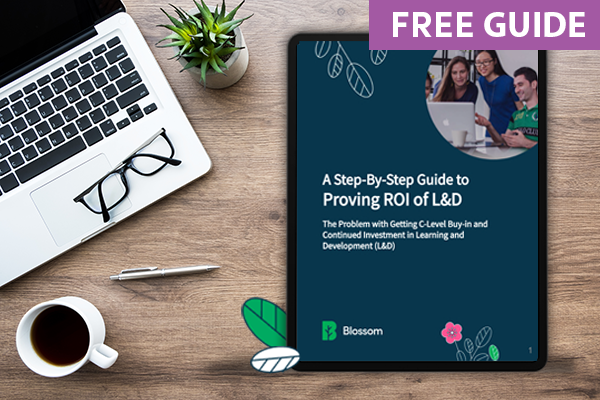Learn about the factors influencing the latest L&D developments. Take a proactive approach, stay informed, and position your business for success. This article will explore seven of the latest trends in 2023 and beyond.
Learning and development (L&D) programs are vital for helping employees gain the skills they need to succeed. But with the L&D industry continually facing challenges, staying ahead of the latest trends is crucial.
Reduce the potential for knee-jerk reactions and make better decisions. Adopting a different approach to achieving short-term goals and investing time and effort now can help you build sustainable L&D strategies.
Learn about the factors influencing the latest L&D developments. Take a proactive approach, stay informed, and position your business for success. This article will explore seven of the latest trends in 2023 and beyond.
Contents:
- What are the driving forces behind the latest L&D trends?
- Trend 1: Closing the skills gap
- Trend 2: Skills-based strategy
- Trend 3: AI and adaptive learning
- Trend 4: Well-being and mental health
- Trend 5: Social learning
- Trend 6: Co-creation of learning activities
- Trend 7: Personalized learning
- Download full ‘L&D Trends 2023’ infographic
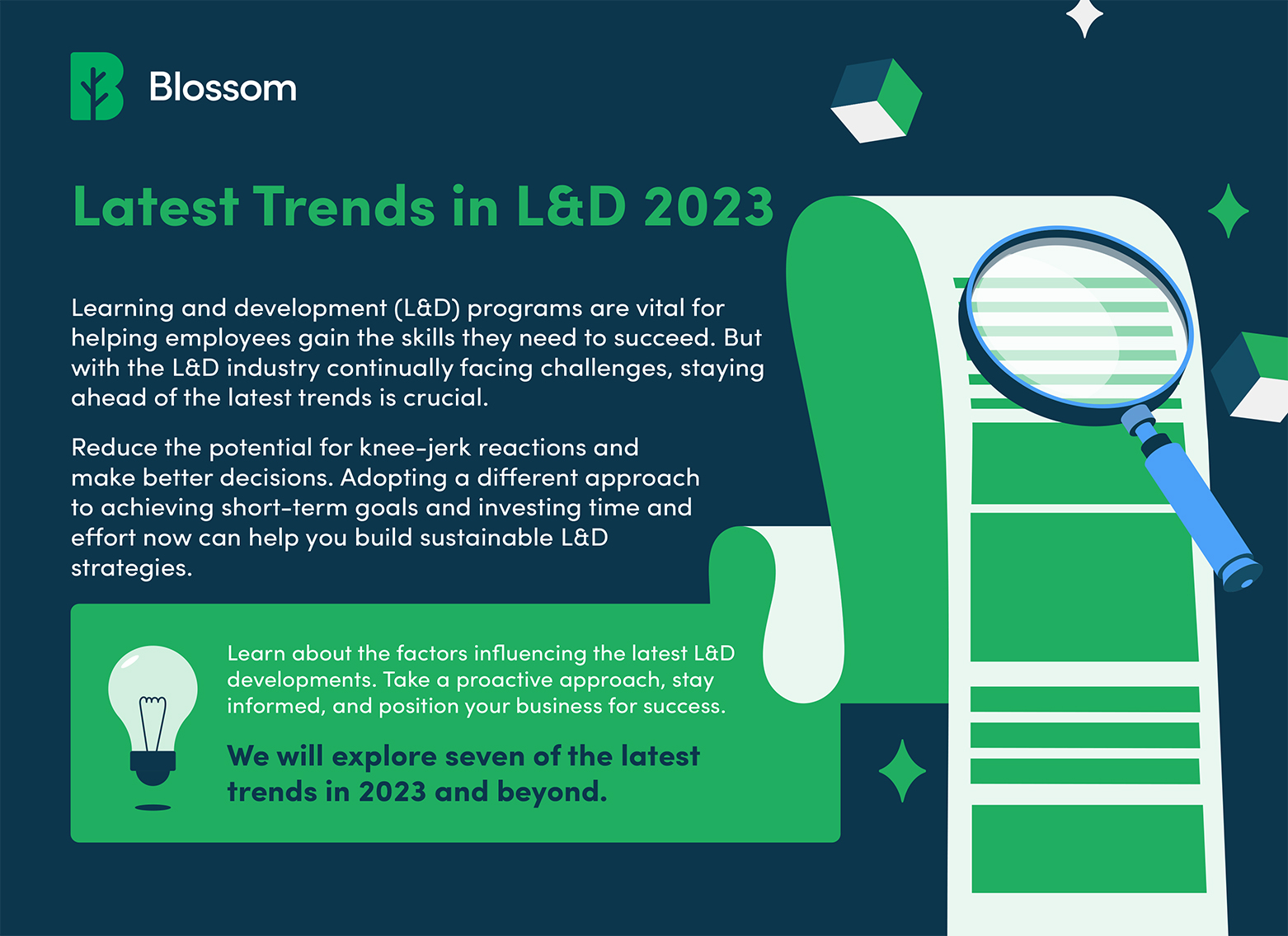
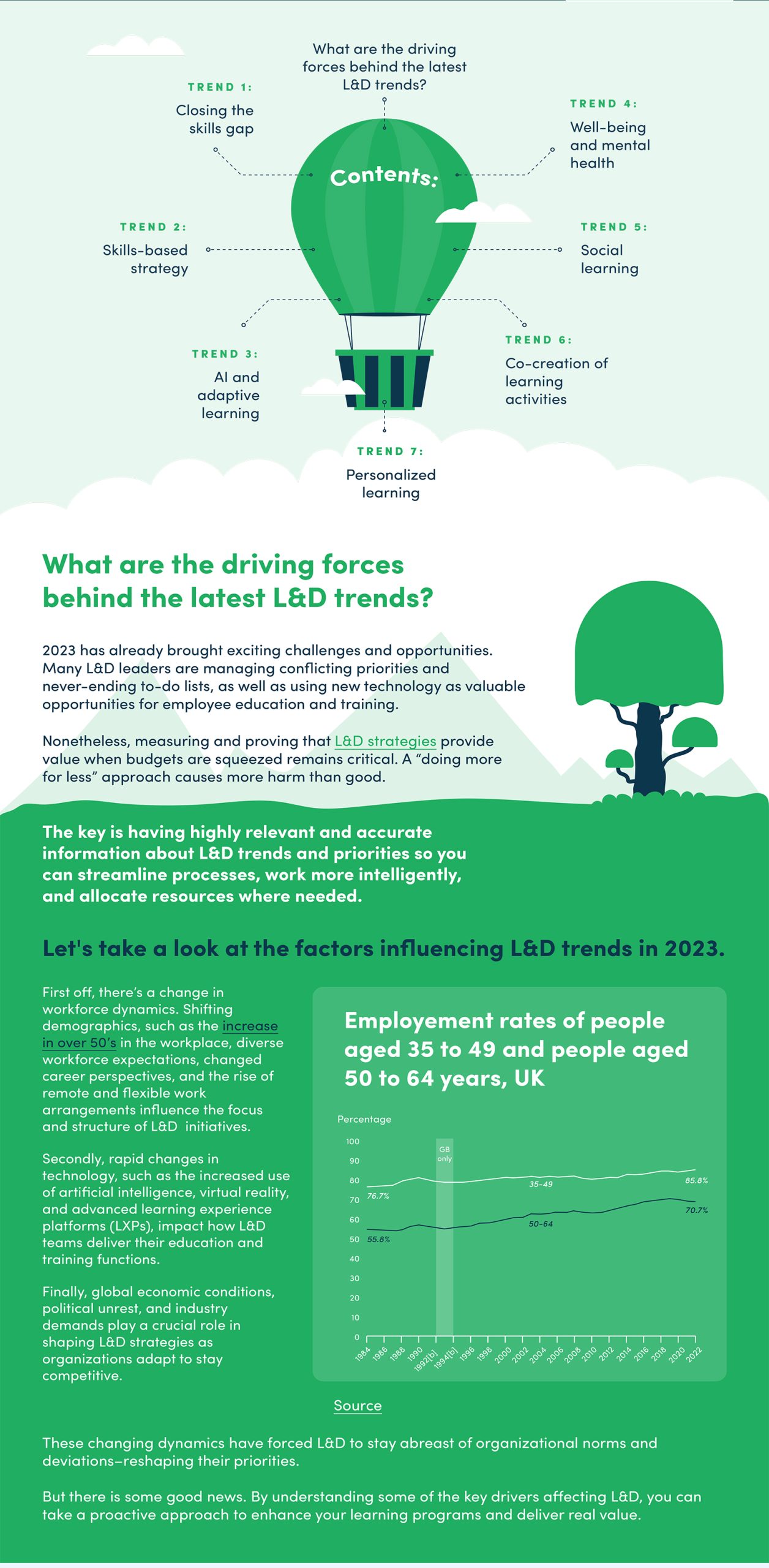
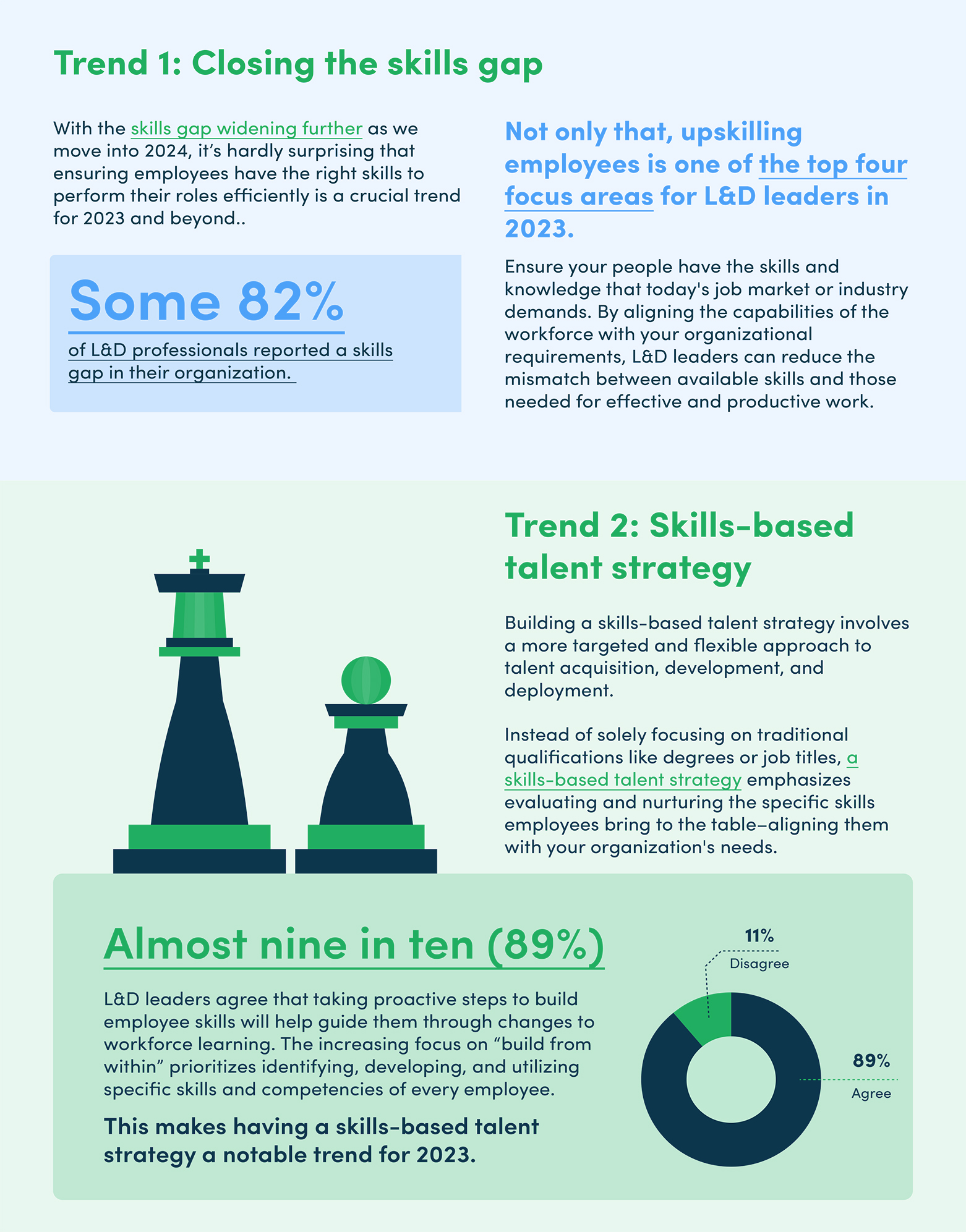
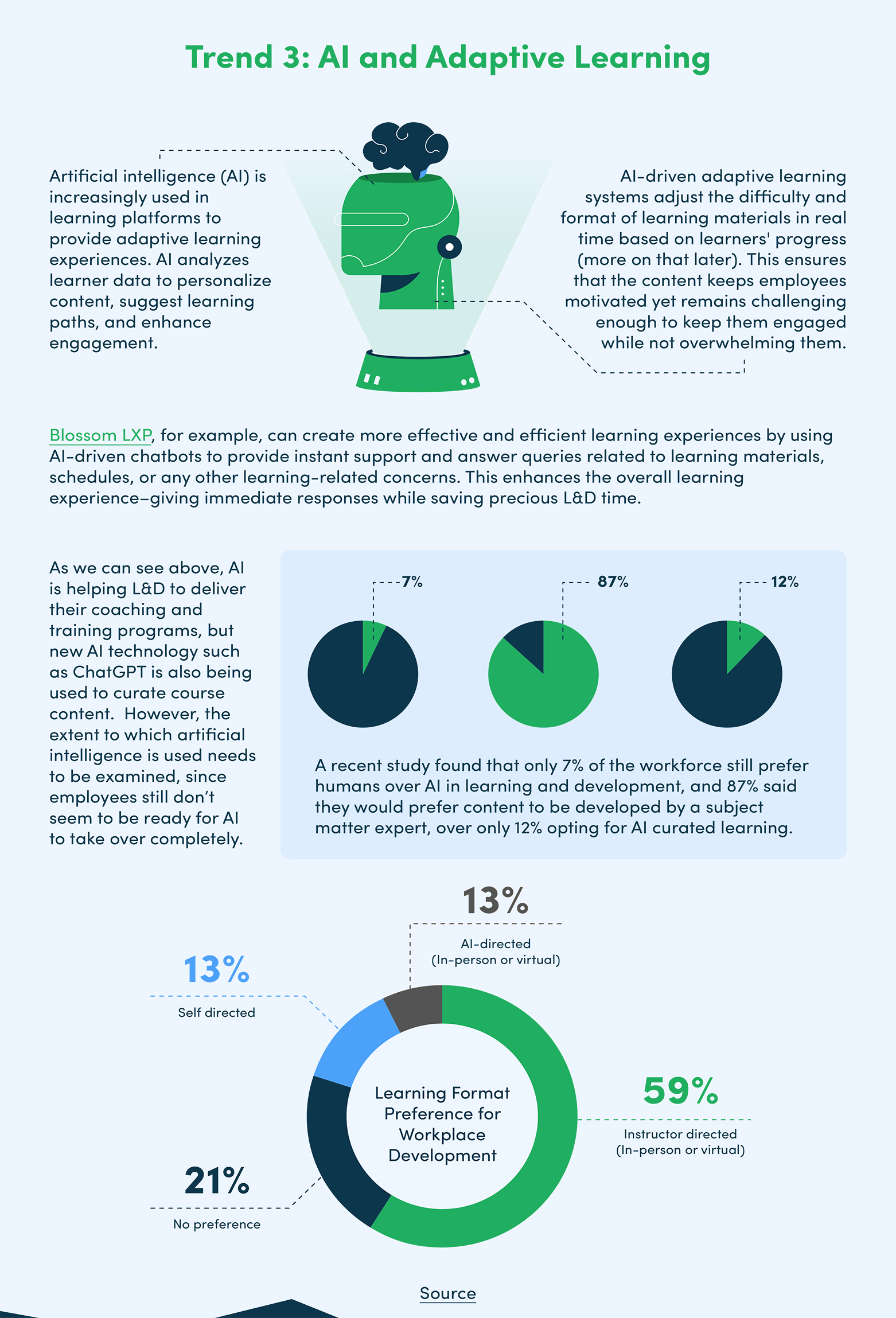
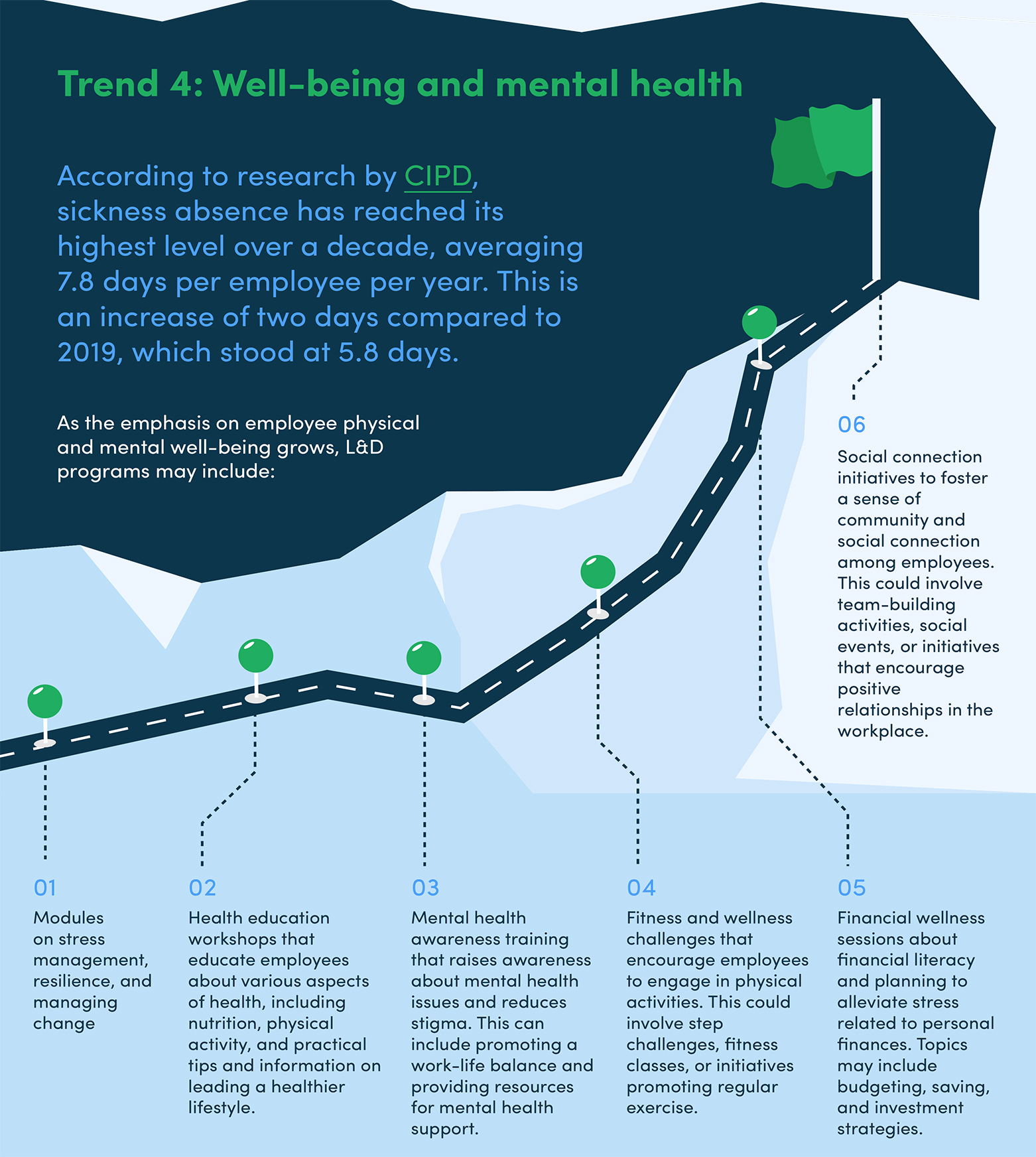
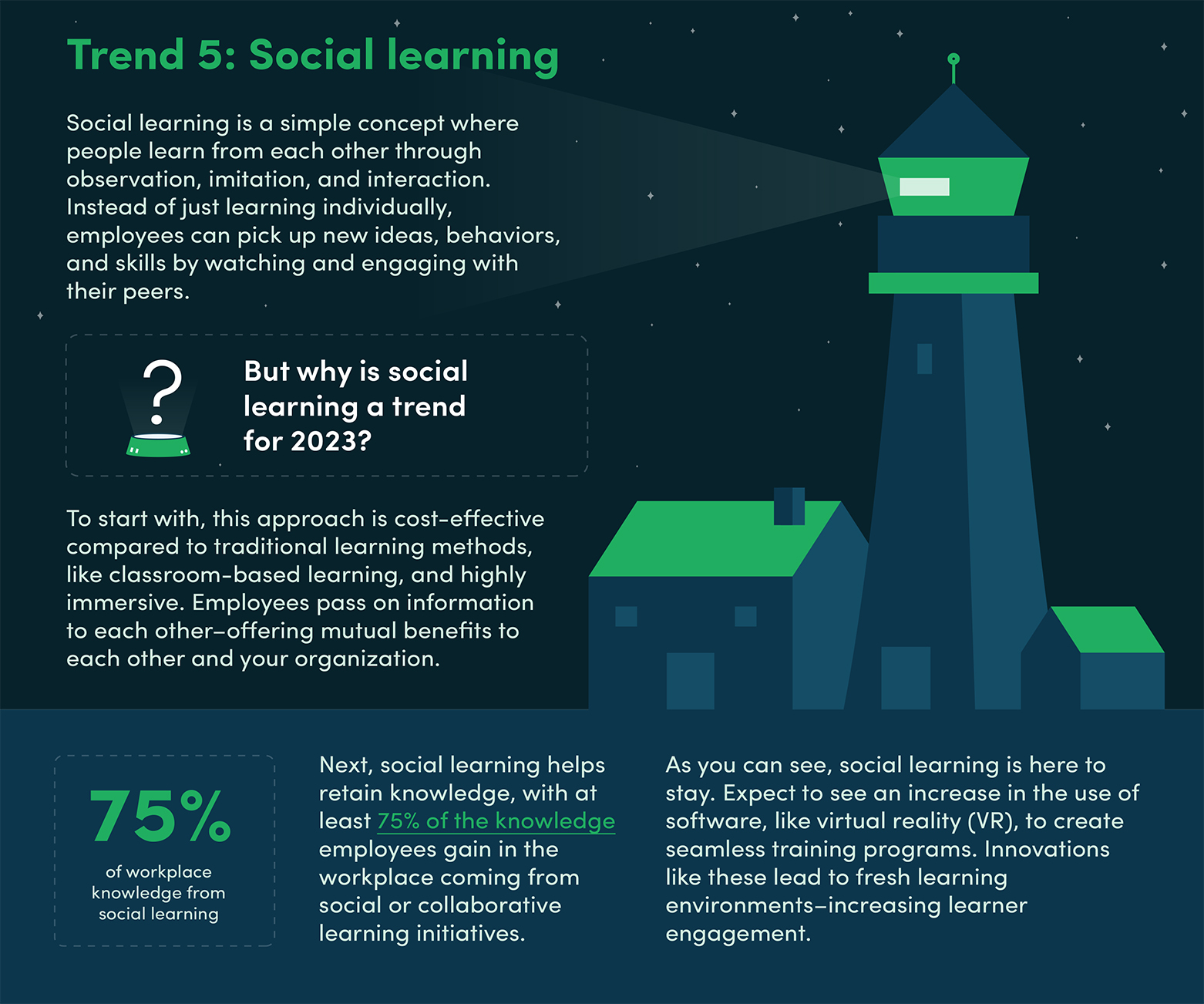
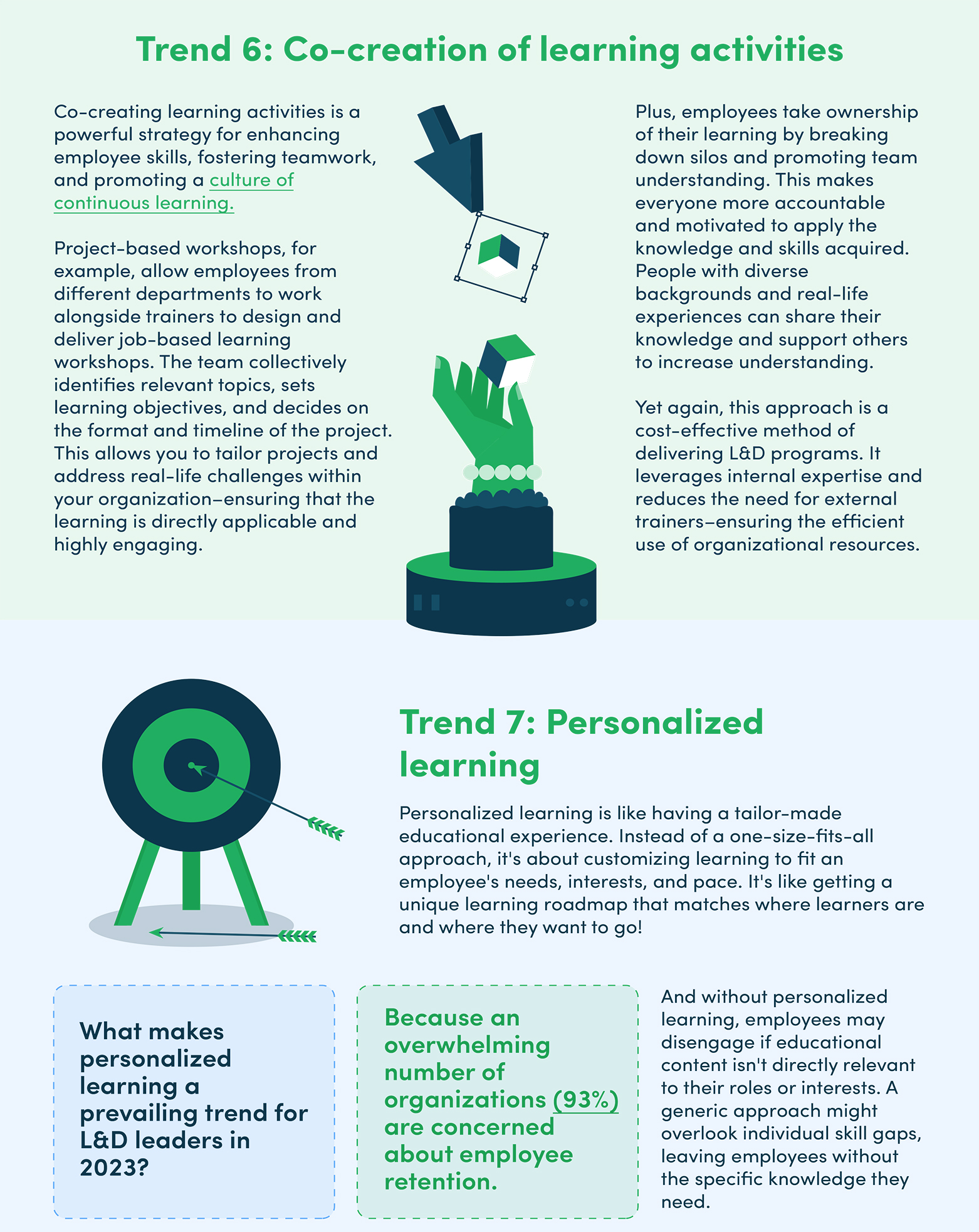
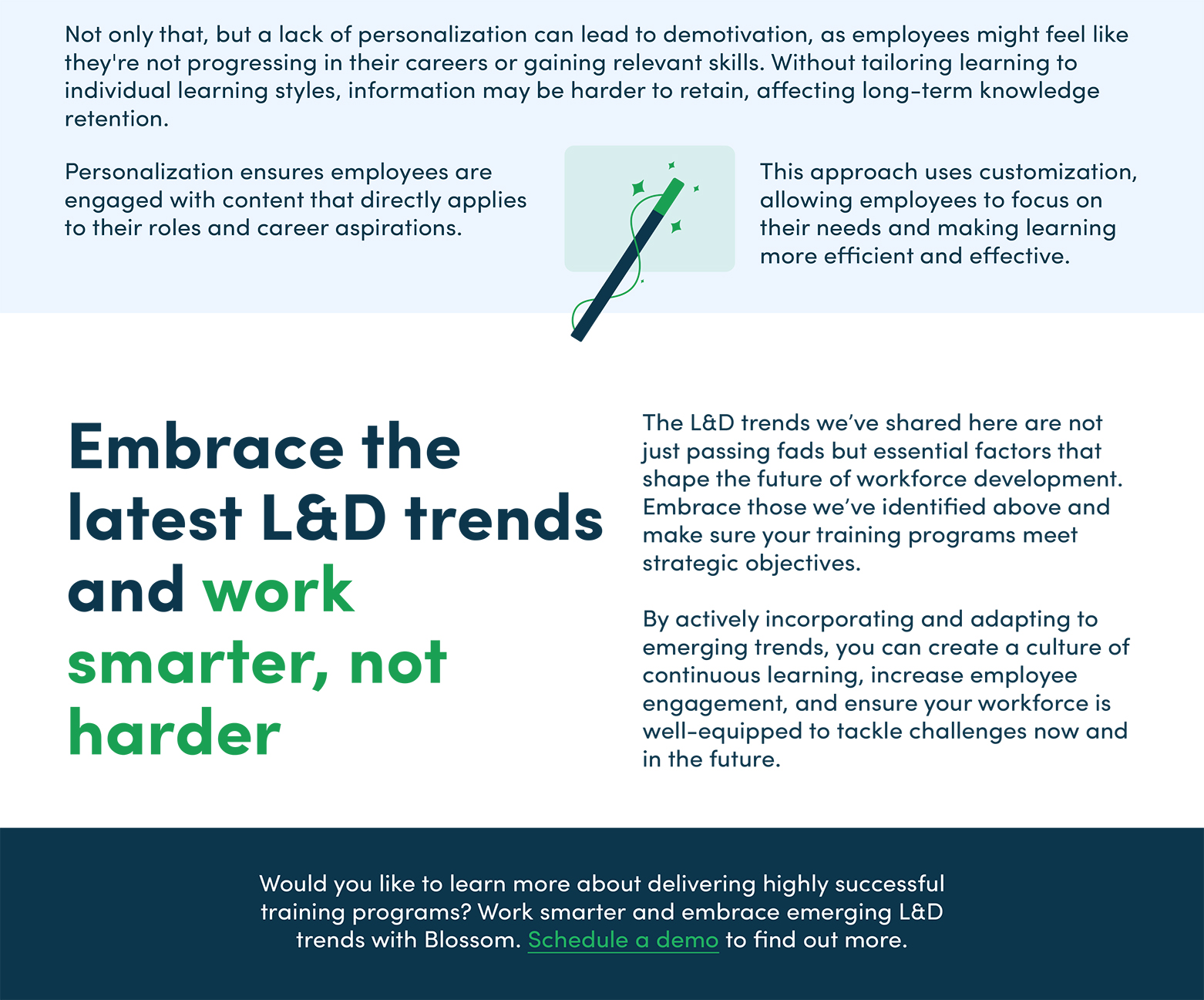
What are the driving forces behind the latest L&D trends?
2023 has already brought exciting challenges and opportunities. Many L&D leaders are managing conflicting priorities and never-ending to-do lists, as well as using new technology as valuable opportunities for employee education and training.
Nonetheless, measuring and proving that L&D strategies provide value when budgets are squeezed remains critical. A “doing more for less’ approach causes more harm than good. The key is having highly relevant and accurate information about L&D trends and priorities so you can streamline processes, work more intelligently, and allocate resources where needed.
Let’s take a look at the factors influencing L&D trends in 2023.
First off, there’s a change in workforce dynamics. Shifting demographics, such as the increase in over 50’s in the workplace, diverse workforce expectations, changed career perspectives, and the rise of remote and flexible work arrangements influence the focus and structure of L&D initiatives.
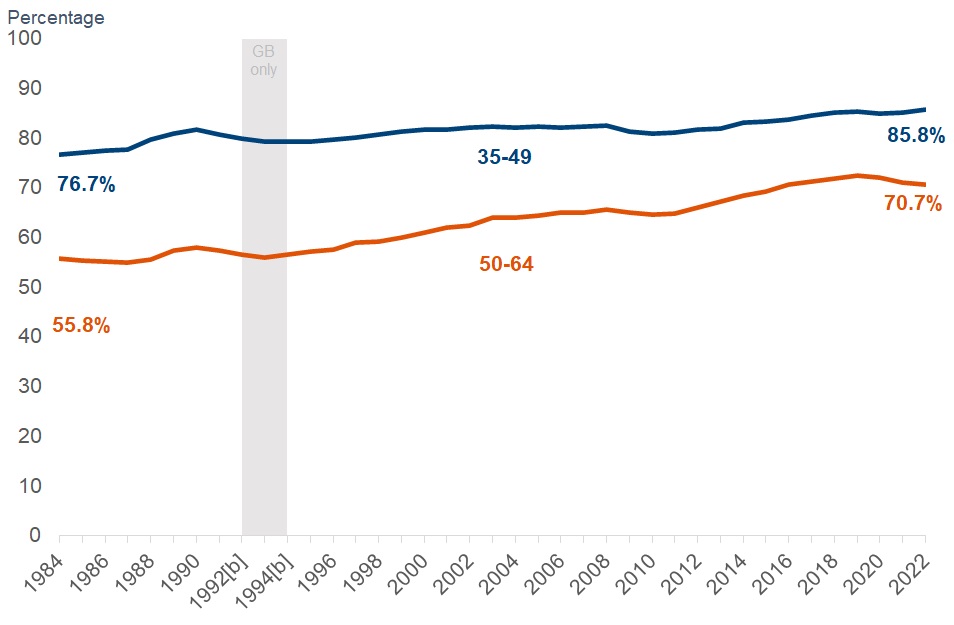
Secondly, rapid changes in technology, such as the increased use of artificial intelligence, virtual reality, and advanced learning experience platforms (LXPs), impact how L&D teams deliver their education and training functions.
Finally, global economic conditions, political unrest, and industry demands play a crucial role in shaping L&D strategies as organizations adapt to stay competitive.
These changing dynamics have forced L&D to stay abreast of organizational norms and deviations–reshaping their priorities.
But there is some good news. By understanding some of the key drivers affecting L&D, you can take a proactive approach to enhance your learning programs and deliver real value.
Trend 1: Closing the skills gap
With the skills gap widening further as we move into 2024, it’s hardly surprising that ensuring employees have the right skills to perform their roles efficiently is a crucial trend for 2023 and beyond..
Some 82% of L&D professionals reported a skills gap in their organization. Not only that, upskilling employees is one of the top four focus areas for L&D leaders in 2023.
Ensure your people have the skills and knowledge that today’s job market or industry demands. By aligning the capabilities of the workforce with your organizational requirements, L&D leaders can reduce the mismatch between available skills and those needed for effective and productive work.
Trend 2: Skills-based talent strategy
Building a skills-based talent strategy involves a more targeted and flexible approach to talent acquisition, development, and deployment.
Instead of solely focusing on traditional qualifications like degrees or job titles, a skills-based talent strategy emphasizes evaluating and nurturing the specific skills employees bring to the table–aligning them with your organization’s needs.
Almost nine in ten (89%) L&D leaders agree that taking proactive steps to build employee skills will help guide them through changes to workforce learning. The increasing focus on “build from within” prioritizes identifying, developing, and utilizing specific skills and competencies of every employee. This makes having a skills-based talent strategy a notable trend for 2023.
Trend 3: AI and Adaptive Learning
Artificial intelligence (AI) is increasingly used in learning platforms to provide adaptive learning experiences. AI analyzes learner data to personalize content, suggest learning paths, and enhance engagement.
AI-driven adaptive learning systems adjust the difficulty and format of learning materials in real time based on learners’ progress (more on that later). This ensures that the content keeps employees motivated yet remains challenging enough to keep them engaged while not overwhelming them.
Blossom LXP, for example, can create more effective and efficient learning experiences by using AI-driven chatbots to provide instant support and answer queries related to learning materials, schedules, or any other learning-related concerns. This enhances the overall learning experience–giving immediate responses while saving precious L&D time.
As we can see above, AI is helping L&D to deliver their coaching and training programs, but new AI technology such as ChatGPT is also being used to curate course content. However, the extent to which artificial intelligence is used needs to be examined, since employees still don’t seem to be ready for AI to take over completely. A recent study found that only 7% of the workforce still prefer humans over AI in learning and development, and 87% said they would prefer content to be developed by a subject matter expert, over only 12% opting for AI curated learning.
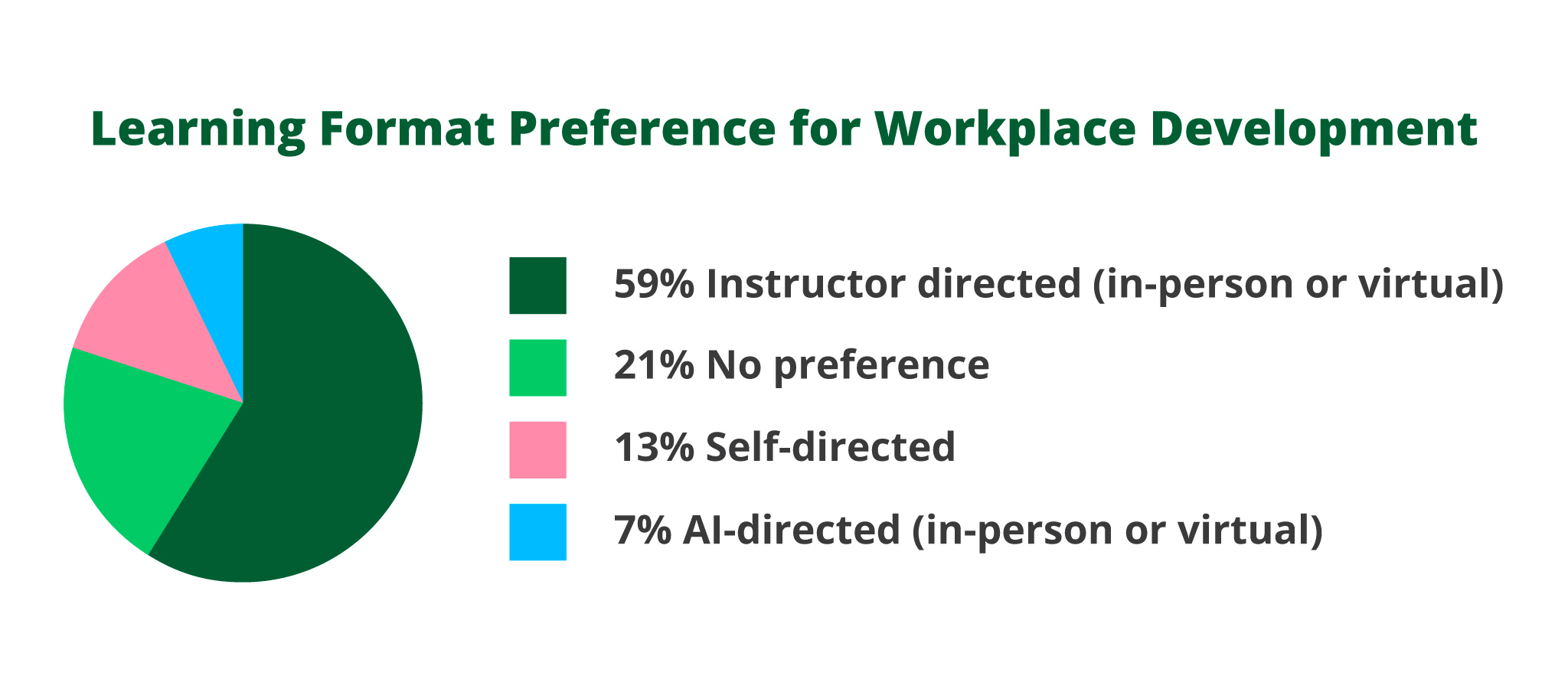
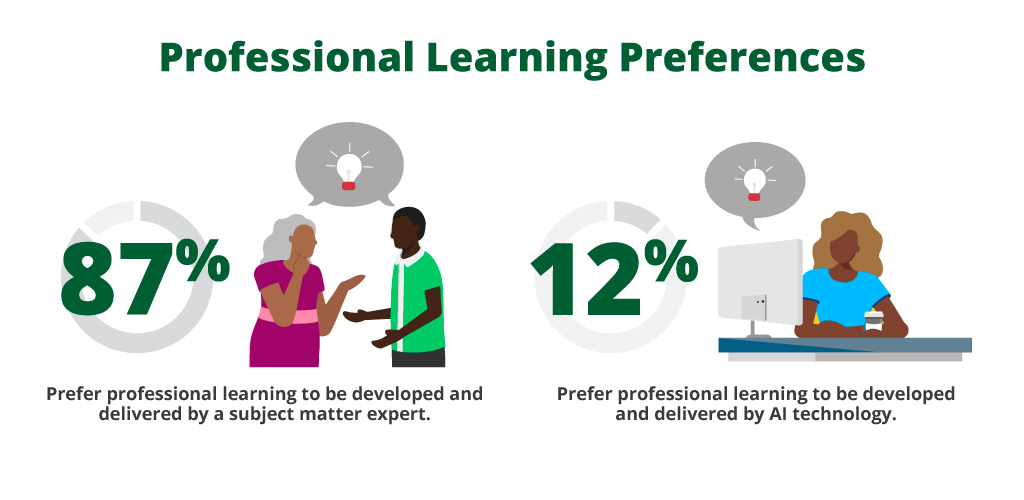
Trend 4: Well-being and mental health
According to research by CIPD, sickness absence has reached its highest level over a decade, averaging 7.8 days per employee per year. This is an increase of two days compared to 2019, which stood at 5.8 days.
As the emphasis on employee physical and mental well-being grows, L&D programs may include:
- Modules on stress management, resilience, and managing change
- Health education workshops that educate employees about various aspects of health, including nutrition, physical activity, and practical tips and information on leading a healthier lifestyle.
- Mental health awareness training that raises awareness about mental health issues and reduces stigma. This can include promoting a work-life balance and providing resources for mental health support.
- Fitness and wellness challenges that encourage employees to engage in physical activities. This could involve step challenges, fitness classes, or initiatives promoting regular exercise.
- Financial wellness sessions about financial literacy and planning to alleviate stress related to personal finances. Topics may include budgeting, saving, and investment strategies.
- Social connection initiatives to foster a sense of community and social connection among employees. This could involve team-building activities, social events, or initiatives that encourage positive relationships in the workplace.
By integrating these components into L&D initiatives, you can create a holistic approach to employee well-being that addresses physical, mental, and social aspects–helping your workforce lead a healthier lifestyle and reducing periods of sickness at work.
Trend 5: Social learning
Social learning is a simple concept where people learn from each other through observation, imitation, and interaction. Instead of just learning individually, employees can pick up new ideas, behaviors, and skills by watching and engaging with their peers.
But why is social learning a trend for 2023?
To start with, this approach is cost-effective compared to traditional learning methods, like classroom-based learning, and highly immersive. Employees pass on information to each other–offering mutual benefits to each other and your organization.
Next, social learning helps retain knowledge, with at least 75% of the knowledge employees gain in the workplace coming from social or collaborative learning initiatives.
As you can see, social learning is here to stay. Expect to see an increase in the use of software, like virtual reality (VR), to create seamless training programs. Innovations like these lead to fresh learning environments–increasing learner engagement.
Trend 6: Co-creation of learning activities
Co-creating learning activities is a powerful strategy for enhancing employee skills, fostering teamwork, and promoting a culture of continuous learning.
Project-based workshops, for example, allow employees from different departments to work alongside trainers to design and deliver job-based learning workshops. The team collectively identifies relevant topics, sets learning objectives, and decides on the format and timeline of the project. This allows you to tailor projects and address real-life challenges within your organization–ensuring that the learning is directly applicable and highly engaging.
Plus, employees take ownership of their learning by breaking down silos and promoting team understanding. This makes everyone more accountable and motivated to apply the knowledge and skills acquired. People with diverse backgrounds and real-life experiences can share their knowledge and support others to increase understanding.
Yet again, this approach is a cost-effective method of delivering L&D programs. It leverages internal expertise and reduces the need for external trainers–ensuring the efficient use of organizational resources.
Trend 7: Personalized learning
Personalized learning is like having a tailor-made educational experience. Instead of a one-size-fits-all approach, it’s about customizing learning to fit an employee’s needs, interests, and pace. It’s like getting a unique learning roadmap that matches where learners are and where they want to go!
What makes personalized learning a prevailing trend for L&D leaders in 2023?
Because an overwhelming number of organizations (93%) are concerned about employee retention. And without personalized learning, employees may disengage if educational content isn’t directly relevant to their roles or interests. A generic approach might overlook individual skill gaps, leaving employees without the specific knowledge they need.
Not only that, but a lack of personalization can lead to demotivation, as employees might feel like they’re not progressing in their careers or gaining relevant skills. Without tailoring learning to individual learning styles, information may be harder to retain, affecting long-term knowledge retention.
Personalization ensures employees are engaged with content that directly applies to their roles and career aspirations. This approach uses customization, allowing employees to focus on their needs and making learning more efficient and effective.
Embrace the latest L&D trends and work smarter, not harder
The L&D trends we’ve shared here are not just passing fads but essential factors that shape the future of workforce development. Embrace those we’ve identified above and make sure your training programs meet strategic objectives.
By actively incorporating and adapting to emerging trends, you can create a culture of continuous learning, increase employee engagement, and ensure your workforce is well-equipped to tackle challenges now and in the future.
Would you like to learn more about delivering highly successful training programs? Work smarter and embrace emerging L&D trends with Blossom. Schedule a demo to find out more.

